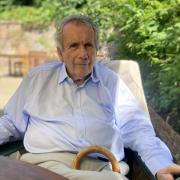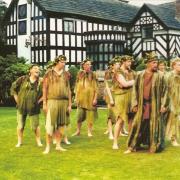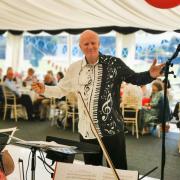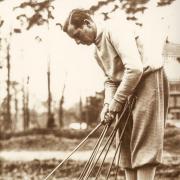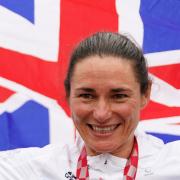Two surviving members of the Second World War Glider Pilot Regiment (GPR) have stressed the importance of the wooden aircraft on D-Day, saying “it couldn’t have been done another way”.
Gliders, used to transport troops and supplies, were towed by bombers over northern France before gliding into the landing zone in Normandy.
Soldiers were then able to capture bridges over the river and canal at Benouville, hampering the movement of enemy troops and allowing Allied forces to press forward from the beaches.
The GPR has said it is not aware of any surviving members of the unit who were involved on June 6 1944.

Peter Davies, 101, of Bollington in Cheshire, flew a Hamilcar glider as part of Operation Varsity, which targeted the Rhine in Germany in 1945.
He said of the glider: “It’s very different from flying a powered aircraft because once you’re towed and you’re committed there’s only one way, and that’s down, it’s like flying a brick.
“It’s a question of making a lot of judgments, I suppose. it was just the job, you didn’t think about it, it was how you did it.
“When you landed, you had 30 men around you, unlike parachutists who were spread all over the place.
“It meant the unit was a unit. How would you get a tank or 17-pounder gun on the ground? By putting them in a bloody big aircraft.
“It just so happens that the glider didn’t have any engines, but we probably carried more troops than ever jumped out of an aeroplane.”
However, Mr Davies said he would be “amazed” if the glider was mentioned as part of the D-Day news coverage, saying “we’re all old men now”.

He went on: “The guys who flew the coup-de-main and took the bridges, it couldn’t have been done any other way, that couldn’t have been done by parachuters.
“In one case there was three gliders all landing within 50 metres of the bridge, that was the epitome of navigation, timing and skill.
“These guys spent hours practising and flying certain compass headings for so long… without the bridge being taken that flank of the landing zones would have been vulnerable.”
Brian Latham, 100, of Llandudno in North Wales, flew a glider carrying troops and supplies into Germany during Operation Varsity, just a few weeks before VE Day.
He said of the glider: “It was a very useful thing towards the end of the war and it was vital on D-Day, the gliders landed ahead of the troops and they took various important things like the Pegasus Bridge.
“They lost a hell of a lot of people, I do know that.”
Asked what it was like to fly, he went on: “It was quite an experience, there was no soaring, you just went straight down.
“It was like a mosquito made of plywood.”

Jane Barkway-Harney, 60, a teacher from Horsham in West Sussex, and the daughter of D-Day Horsa glider pilot Geoff Barkway, said the regiment had “earned its place in history”.
Her father, the pilot of the third glider to land at Pegasus Bridge, was shot in the wrist and later had his arm amputated.
Ms Barkway-Harney said: “If you had a plane that dropped loads of paratroops, they could be scattered over quite a wide area by the time they landed and it takes a long time for them to gather back together again and you lose the element of surprise.
“So the idea of the glider was that actually it would land silently, nobody knew it was coming and you instantly had 30 people ready to fight all on the same spot and ready to go.”
Family members of glider pilots involved in the D-Day operation are to visit Normandy.





